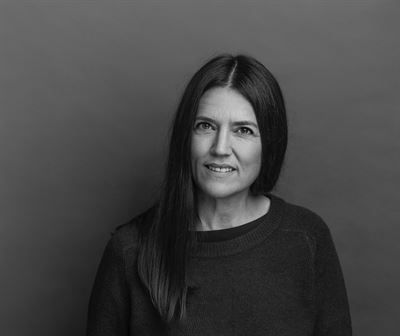Marknadsnyheter
Lynparza approved in the US as a 1st-line maintenance treatment of germline BRCA-mutated metastatic pancreatic cancer
Lynparza reduced the risk of disease progression or death by 47% in patients whose disease had not progressed on at least 16 weeks of a 1st-line platinum-based chemotherapy regimen
Only PARP inhibitor approved in germline BRCA-mutated metastatic pancreatic cancer
AstraZeneca and MSD Inc., Kenilworth, N.J., US (MSD: known as Merck & Co., Inc. inside the US and Canada) today announced that Lynparza (olaparib) has been approved in the US for the maintenance treatment of adult patients with deleterious or suspected deleterious germline BRCA-mutated (gBRCAm) metastatic pancreatic adenocarcinoma (pancreatic cancer) whose disease has not progressed on at least 16 weeks of a 1st-line platinum-based chemotherapy regimen. Patients will be selected for therapy based on an FDA-approved companion diagnostic for Lynparza.
The approval follows the recommendation from the US FDA Oncologic Drugs Advisory Committee (ODAC) on 17 December for Lynparza in this indication, and was based on results from the pivotal Phase III POLO trial published in The New England Journal of Medicine and presented at the 2019 American Society of Clinical Oncology Annual Meeting.
Results showed a statistically significant and clinically meaningful improvement in progression-free survival, where Lynparza nearly doubled the time patients with gBRCAm metastatic pancreatic cancer lived without disease progression or death to a median of 7.4 months vs. 3.8 months on placebo. The safety and tolerability profile of Lynparza in the POLO trial was in line with that observed in prior clinical trials.
Dave Fredrickson, Executive Vice President, Oncology Business Unit, said: “Patients with advanced pancreatic cancer historically have faced poor outcomes due to the aggressive nature of the disease and limited treatment advances over the last few decades. Lynparza is now the only approved targeted medicine in biomarker-selected patients with advanced pancreatic cancer.”
Roy Baynes, Senior Vice President and Head of Global Clinical Development, Chief Medical Officer, MSD Research Laboratories, said: “Lynparza embodies MSD’s and AstraZeneca’s commitment to advance the treatment of challenging types of cancer, including metastatic pancreatic cancer. The expanded approval of Lynparza represents a significant milestone for patients and supports the value of germline BRCA testing in patients with this disease.”
Hedy L. Kindler, Co-Principal Investigator of the POLO trial and Professor of Medicine, University of Chicago Medicine, said: “Today’s approval of olaparib based on the POLO results gives clinicians an important 1st-line maintenance treatment option which nearly doubled the progression-free survival benefit in patients with germline BRCA-mutated metastatic pancreatic cancer.”
Julie Fleshman, President and CEO, Pancreatic Cancer Action Network, said: “Metastatic pancreatic cancer patients have been waiting a long time for new therapy options for their devastating disease. Today’s approval of Lynparza provides an exciting new treatment option for patients with germline BRCA-mutated metastatic pancreatic cancer.”
The Pancreatic Cancer Action Network (PanCAN) is a US-based organisation that supports and advocates on behalf of the patients, caregivers and communities affected by pancreatic cancer.
About pancreatic cancer
Pancreatic cancer is a deadly cancer with a high unmet medical need. It is the 12th most commonly occurring cancer2 and the 7th leading cause of cancer death globally.3 The disease has the lowest survival rate of the most common cancers4,5 and is the only major cancer with a single-digit five-year survival rate (2-9%) in nearly every country.5 There were approximately 460,000 new cases worldwide in 20186. As there are often no symptoms, or symptoms may be non-specific in the early stages7, it is most commonly diagnosed at an incurable stage.8 Around 80% of pancreatic cancer patients are diagnosed when the disease has metastasised and for these the average survival is less than a year.9 Despite advances in treatment10, few improvements have been made in diagnosis and treatment over the decades.11,12 Current treatment is surgery (for which approximately only 10-20% of patients are eligible), chemotherapy and radiotherapy, highlighting a critical unmet medical need for more effective treatment options.13
About POLO
POLO is a Phase III randomised, double-blinded, placebo-controlled, multi-centre trial of Lynparza tablets (300mg twice daily) as maintenance monotherapy vs. placebo. The trial randomised 154 patients with gBRCAm metastatic pancreatic cancer whose disease had not progressed on 1st-line platinum-based chemotherapy. Patients were randomised (3:2) to receive Lynparza or placebo until disease progression. The primary endpoint was PFS and key secondary endpoints included overall survival, time to second disease progression, overall response rate and health-related quality of life.1
The results showed a statistically significant and clinically meaningful improvement in progression-free survival, where Lynparza nearly doubled the time patients with gBRCAm metastatic pancreatic cancer lived without disease progression or death to a median of 7.4 months vs. 3.8 months on placebo and reduced the risk of disease progression or death by 47% (HR 0.53 [95% CI, 0.35-0.81], p=0.0035). The benefit of maintenance with Lynparza was seen consistently across a range of clinically meaningful endpoints. In patients with measurable disease at baseline, 23% responded to Lynparza vs.12% on placebo (odds ratio, 2.30; 95% CI, 0.89 to 6.76) and had a median duration of treatment in excess of two years (24.9 months; 95% CI, 14.8 to could not be calculated) vs 3.7 months on placebo (95% CI, 2.1 to could not be calculated). Overall survival (OS), a secondary endpoint, at interim analysis was 18.9 months for Lynparza vs. 18.1 months for placebo but did not reach statistical significance (HR=0.90; p=0.68).
The safety and tolerability profile of Lynparza in the POLO trial was in line with that observed in prior clinical trials. The most common adverse reactions (ARs) ≥10% were fatigue (60%), nausea (45%), abdominal pain (34%), diarrhoea (29%), anaemia (27%), decreased appetite (25%), constipation (23%), vomiting (20%), back pain (19%), arthralgia (15%), rash (15%), thrombocytopenia (14%), dyspnoea (13%), nasopharyngitis (12%), neutropenia (12%), dysgeusia (11%) and stomatitis (10%). Grade 3 or above ARs were anaemia (11%), fatigue (5%), neutropenia (4%), decreased appetite (3%), thrombocytopenia (3%), abdominal pain (2%), vomiting (1%) and arthralgia (1%). ARs led to dose reduction in 23% of patients on Lynparza while 6% of patients discontinued treatment.
Based on the results of POLO, the National Comprehensive Cancer Network (NCCN) guidelines were updated in July 2019 to recommend Lynparza as maintenance treatment for gBRCAm pancreatic cancer.14
In the US, eligible metastatic pancreatic cancer patients will be selected for therapy based on the FDA-approved companion diagnostic, BRACAnalysis CDx, a genetic test that detects the presence of a BRCA1 or BRCA2 gene mutation. BRACAnalysis CDx is owned and commercialised by Myriad Genetics, Inc.
About BRCA mutations
BRCA1 and BRCA2 (breast cancer susceptibility genes 1/2) are human genes that produce proteins responsible for repairing damaged DNA and play an important role in maintaining the genetic stability of cells. When either of these genes is mutated, or altered, such that its protein product either is not made or does not function correctly, DNA damage may not be repaired properly, and cells become unstable. As a result, cells are more likely to develop additional genetic alterations that can lead to cancer.
About Lynparza
Lynparza (olaparib) is a first-in-class PARP inhibitor and the first targeted treatment to block DNA damage response (DDR) in cells/tumours harbouring a deficiency in homologous recombination repair (HRR), such as mutations in BRCA1 and/or BRCA2. Inhibition of PARP with Lynparza leads to the trapping of PARP bound to DNA single-strand breaks, stalling of replication forks, their collapse and the generation of DNA double-strand breaks and cancer cell death. Lynparza is being tested in a range of PARP-dependent tumour types with defects and dependencies in the DDR pathway.
Lynparza is currently approved in 65 countries, including those in the EU, for the maintenance treatment of platinum-sensitive relapsed ovarian cancer, regardless of BRCA status. It is approved in the US, the EU, Japan, China and several other countries as 1st-line maintenance treatment of BRCA-mutated advanced ovarian cancer following response to platinum-based chemotherapy. It is also approved in 44 countries, including the US and Japan, for germline BRCA-mutated, HER2-negative, metastatic breast cancer, previously treated with chemotherapy; in the EU, this includes locally advanced breast cancer. Regulatory reviews are underway in other jurisdictions for ovarian, breast and pancreatic cancers.
Lynparza, which is being jointly developed and commercialised by AstraZeneca and MSD, is approved for advanced ovarian cancer and metastatic breast cancer and has been used in over 25,000 patients worldwide. Lynparza has the broadest and most advanced clinical trial development programme of any PARP inhibitor, and AstraZeneca and MSD are working together to understand how it may affect multiple PARP-dependent tumours as a monotherapy and in combination across multiple cancer types. Lynparza is the foundation of AstraZeneca’s industry-leading portfolio of potential new medicines targeting DDR mechanisms in cancer cells.
About the AstraZeneca and MSD strategic oncology collaboration
In July 2017, AstraZeneca and Merck & Co., Inc., Kenilworth, NJ, US, known as MSD outside the United States and Canada, announced a global strategic oncology collaboration to co-develop and co-commercialise Lynparza, the world’s first PARP inhibitor, and potential new medicine selumetinib, a MEK inhibitor, for multiple cancer types. Working together, the companies will develop Lynparza and selumetinib in combination with other potential new medicines and as monotherapies. Independently, the companies will develop Lynparza and selumetinib in combination with their respective PD-L1 and PD-1 medicines.
About AstraZeneca in oncology
AstraZeneca has a deep-rooted heritage in oncology and offers a quickly growing portfolio of new medicines that has the potential to transform patients’ lives and the Company’s future. With at least six new medicines to be launched between 2014 and 2020, and a broad pipeline of small molecules and biologics in development, the Company is committed to advance oncology as a key growth driver for AstraZeneca focused on lung, ovarian, breast and blood cancers. In addition to AstraZeneca’s main capabilities, the Company is actively pursuing innovative partnerships and investments that accelerate the delivery of our strategy, as illustrated by the investment in Acerta Pharma in haematology.
By harnessing the power of four scientific platforms – Immuno-Oncology, Tumour Drivers and Resistance, DNA Damage Response and Antibody Drug Conjugates – and by championing the development of personalised combinations, AstraZeneca has the vision to redefine cancer treatment and, one day, eliminate cancer as a cause of death.
About AstraZeneca
AstraZeneca (LSE/STO/NYSE: AZN) is a global, science-led biopharmaceutical company that focuses on the discovery, development and commercialisation of prescription medicines, primarily for the treatment of diseases in three therapy areas – Oncology, Cardiovascular, Renal and Metabolism, and Respiratory. AstraZeneca operates in over 100 countries and its innovative medicines are used by millions of patients worldwide. Please visit astrazeneca.com and follow the Company on Twitter @AstraZeneca.
|
Media Relations |
||
|
Gonzalo Viña |
+44 203 749 5916 |
|
|
Rob Skelding |
Oncology |
+44 203 749 5821 |
|
Rebecca Einhorn |
Oncology |
+1 301 518 4122 |
|
Matt Kent |
BioPharmaceuticals |
+44 203 749 5906 |
|
Jennifer Hursit |
Other |
+44 203 749 5762 |
|
Christina Malmberg Hägerstrand |
Sweden |
+46 8 552 53 106 |
|
Michele Meixell |
US |
+1 302 885 2677 |
|
Investor Relations |
||
|
Thomas Kudsk Larsen |
+44 203 749 5712 |
|
|
Henry Wheeler |
Oncology |
+44 203 749 5797 |
|
Christer Gruvris |
BioPharmaceuticals (Cardiovascular, Metabolism) |
+44 203 749 5711 |
|
Nick Stone |
BioPharmaceuticals (Renal) Environmental, Social and Governance |
+44 203 749 5716 |
|
Josie Afolabi |
BioPharmaceuticals (Respiratory) Other medicines |
+44 203 749 5631 |
|
Craig Marks |
Finance Fixed income |
+44 7881 615 764 |
|
Jennifer Kretzmann |
Corporate access Retail investors |
+44 203 749 5824 |
|
US toll-free |
+1 866 381 72 77 |
References
- Golan et al (2019). Maintenance Olaparib for Germline BRCA-Mutated Metastatic Pancreatic Cancer. New England Journal of Medicine.
- World Cancer Research Fund International. Pancreatic cancer statistics. Available at: www.wcrf.org/dietandcancer/cancer-trends/pancreatic-cancer-statistics Accessed October 2019.
- World Health Organization. IARC. (2019). Estimated number of deaths in 2018, worldwide, both sexes, all ages. Website available here. Accessed October 2019.
- Pancreaticcancer.org.uk. Pancreatic cancer statistics. Available at: www.pancreaticcancer.org.uk/statistics/ Accessed October 2019.
- Worldpancreaticcancerday.org. Available at: www.worldpancreaticcancerday.org/about-pancreatic-cancer/ Accessed October 2019.
- World Health Organization. IARC. (2019). Estimated number of new cases in 2018, worldwide, both sexes, all ages. Website available here. Accessed October 2019.
- Pancreaticcancer.org.uk. Signs and symptoms of pancreatic cancer. Available at: www.pancreaticcancer.org.uk/information-and-support/facts-about-pancreatic-cancer/signs-and-symptoms-of-pancreatic-cancer/ Accessed October 2019.
- DaVee (2018). Pancreatic cancer screening in high-risk individuals with germline genetic mutations. Gastrointestinal Endoscopy. 87(6), pp.1443-1450.
- Azar et al. (2019). Treatment and survival rates of stage IV pancreatic cancer at VA hospitals: a nation-wide study. Journal of Gastrointestinal Oncology, 10(4), pp.703-711.
- Sheahan et al. (2018). Targeted therapies in the management of locally advanced and metastatic pancreatic cancer: a systematic review. Oncotarget. 9(30): 21613-21627.
- Adamska et al. (2017). Pancreatic ductal adenocarcinoma: current and evolving therapies. International Journal of Molecular Science. 18(7): 1338.
- Yongxing et al. (2017). Molecular subtyping of pancreatic cancer: translating genomics and transcriptomics into the clinic. Journal of Cancer. 8(4):513-522.
- Stunt, A. (2016). Pancreatic cancer: GPs can help prognosis by identifying early signs. Guidelines in Practice. Available at: www.guidelinesinpractice.co.uk/cancer/pancreatic-cancer-gps-can-help-prognosis-by-identifying-early-signs/352855.article Accessed October 2019.
- NCCN. (2019). NCCN Guidelines for Patients | Pancreatic Cancer. Nccn.org. Available at: https://www.nccn.org/patients/guidelines/pancreatic/12/ Accessed December 2019.
Marknadsnyheter
Regeringen föreslår lättnader i byggkraven för studentbostäder
Regeringen har beslutat om en lagrådsremiss med förslag till lättnader i byggkraven för studentbostäder. Syftet är att öka möjligheterna till flexibilitet vid byggandet.
– På många studieorter är det svårt för studenter att hitta boende. Därför behöver byggregelverket förenklas. Syftet är att möjliggöra för fler studentbostäder genom sänkta byggkostnader och ökad flexibilitet, säger infrastruktur- och bostadsminister Andreas Carlson.
Förslaget innebär att det blir möjligt att göra undantag från kraven på tillgänglighet och användbarhet i en byggnad som innehåller studentbostäder. Undantagen ska kunna tillämpas vid både nyproduktion och vid ändring av en byggnad.
Det ska vara möjligt att göra undantag för högst 80 procent av studentbostäderna i ett byggprojekt. Minst 20 procent av studentbostäderna ska fortfarande uppfylla gällande krav på tillgänglighet och användbarhet för personer med nedsatt rörelse- eller orienteringsförmåga.
Lagändringen ger större flexibilitet vid byggande av studentbostäder och skapar fler tänkbara sätt att utforma planlösningar. Till exempel kan bostadsytan minskas och fler bostäder rymmas inom en given yta.
De föreslagna undantagen ska inte hindra personer med funktionsnedsättning att vara delaktiga i sociala sammanhang. En studentbostad som omfattas av undantagen ska kunna besökas av en person med nedsatt rörelse- eller orienteringsförmåga.
Regeringen breddar också definitionen av studentbostäder till att inkludera all vuxenutbildning för att göra det möjligt för fler kommuner att erbjuda studentbostäder.
Förslagen föreslås träda i kraft den 1 juli 2025.
Lagrådsremissen: Lättnader i byggkraven för studentbostäder – Regeringen.se
Presskontakt
Ebba Gustavsson
Pressekreterare hos infrastruktur- och bostadsminister Andreas Carlson
Telefon (växel) 08-405 10 00
Mobil 076-12 70 488
ebba.gustavsson@regeringskansliet.se
Marknadsnyheter
“Vi behöver tillsammans enas om vettiga avtal, som sätter standard för branschen”


Sveriges Radios Kulturnytt gör just nu en mycket välkommen granskning av villkoren i musikbranschen. Igår lyftes artisten Siw Malmkvists situation med ett avtal som inte förnyats på över 60 år. Hennes situation är tyvärr långt ifrån unik. Musikerförbundet har länge uppmärksammat att majorbolagen fortsätter att betala extremt låga royaltynivåer till artister vars kontrakt skrevs på 1960-talet – en tid då digital streaming inte existerade.
– Jag kan intyga att artisterna som talar ut i P1 är långt ifrån ensamma om sin situation och vi uppmanar deras artistkollegor att gå ut med sitt tydliga stöd till de som vågar bryta tystnaden om oskäliga ersättningar, säger Musikerförbundets ordförande Karin Inde.
Musiker och artister skapar det värde som skivbolagen tjänar pengar på, men ändå ser vi gång på gång hur bolagen behåller stora delar av intäkterna. Att en av Sveriges mest folkkära artister, med en karriär som sträcker sig över decennier, fortfarande har en oskälig royalty är ett tydligt bevis på branschens obalans.
– Tystnadskulturen kring prissättning är enbart bra för bolagen. Både artister och musiker skulle verkligen tjäna på att dela med sig till varandra om hur betalningar och dealar verkligen ser ut. Förstås i trygga, egna rum. Det är bara bolagen som tjänar på att vi inte pratar med varandra om pengar, säger Karin Inde.
Stort tack till de modiga artister som ser till att lyfta problematiken! För att vi ska få till en i grunden mer rättvis musikbransch behöver de stora parterna i sammanhanget – skivbolagen, musikerna och artisterna – göra som de flesta andra svenska branscher lyckas med:
– Vi behöver tillsammans enas om vettiga och balanserade avtal, som sätter standard för branschen. Musikerförbundet är redo att göra vår del i arbetet för bättre villkor i musikbranschen, frågan är om skivbolagen är redo, säger Karin Inde.
Karin Inde
Förbundsordförande
karin.inde@musikerforbundet.se
+46 (0)704447228
Musikerförbundet är fackförbundet för professionella musiker och artister. Vi arbetar för förbättrade upphovsrättsliga och arbetsrättsliga villkor och för att våra medlemmar ska få en rättvis del av de värden de skapar i samhället.
Marknadsnyheter
Bönor från egen kaffeskog, sump till jord – Viking Lines nya kaffe gör gott på många olika sätt


Viking Lines resenärer dricker varje år 8,5 miljoner koppar kaffe. Nu satsar rederiet på ett helt nytt kaffe som ger minskade klimatutsläpp och bättre levnadsvillkor för odlarna. Kaffet från Slow Forest odlas på rederiets egen odling i Laos utan kemiska gödningsmedel, handplockas och rostas därefter i Danmark.
Allt kaffe som serveras på Viking Lines fartyg är nu hållbart producerat Slow Forest-kaffe, odlat på rederiets 75 hektar stora odling på högplatåerna i Laos och rostat i Danmark. Kaffeplantorna odlas bland träd på återbeskogad mark, i stället för på traditionellt skövlade plantager. Viking Lines odling ligger i en kolsänka där målsättningen är att plantera 30 000 träd, vilket innebär nästan 400 träd per hektar. Kaffeskogen förbättrar också den lokala biologiska mångfalden i området.
Odlingen, bearbetningen och rostningen av kaffet hanteras av Slow Forest Coffee. För företaget är det viktigt att produktionskedjan är rättvis och transparent. Utöver miljöfördelarna erbjuder Slow Forest bättre lönevillkor och sjukersättning för byns odlare.
”Den traditionella kaffetillverkningens koldioxidavtryck är stort och merparten av intäkterna går till Europa i stället för produktionsländerna. Vi ville göra annorlunda. Våra kunder vill göra hållbara val, och nu kan de njuta av sitt kaffe med bättre samvete än någonsin tidigare,” berättar Viking Lines restaurangchef Janne Lindholm.
Bönorna till Slow Forest-kaffet får sakta mogna i skuggan av träden, utan kemiska gödningsmedel. De plockas också för hand, vilket avsevärt förbättrar kaffets kvalitet och smak. Viking Lines nya kaffe består till 100 procent av Arabica-bönor, med en balanserad syrlighet samt smak av nötter och choklad. Rostningsprofilen har skapats av den världsberömda danska rostningsmästaren Michael de Renouard.
”Vi valde en mörkrost till fartygets kaffe, vilket passar både finländarnas och svenskarnas nuvarande smakpreferenser gällande rostning. Finländarnas smak gällande kaffe har under de senaste åren utvecklats mot en mörkare rostning. Innan vi gjorde vårt slutgiltiga val testades det nya kaffet i Viking Cinderellas bufférestaurang och personalmässen – och båda testgrupperna gav toppbetyg. Då 8,5 miljoner koppar kaffe bryggs varje år kan inget lämnas åt slumpen!” säger Janne Lindholm.
Viking Lines hållbarhetsmål stannar inte vid produktionskedjan. Kaffesump från fartygen återvinns nämligen som råmaterial för trädgårdsjord. Detta minskar avsevärt användningen av jungfrulig torv vid tillverkningen av mylla.
”Vi har som mål att allt som tagits ombord på fartygen som är möjligt att återvinna ska återanvändas eller återvinnas. Det gäller inte bara kaffet utan även matavfall och till exempel textilier som tas ur bruk. Ett bra exempel på vårt livscykeltänkande är att frityrolja från fartygets restauranger blir till biobränsle för den finska sjöfartsindustrin,” säger Viking Lines hållbarhetschef Dani Lindberg.
Slow Forest Coffee – 5 fakta:
- Slow Forest Coffee är ett kaffeföretag som verkar i Laos, Vietnam och Indonesien i samarbete med över 500 lokala kaffeodlare.
- Företaget grundades år 2019 av Pinja Puustjärvi, driven av en vilja att skydda skogarna i Laos och stötta lokala odlare. Puustjärvi bodde som barn i Laos på grund av sin fars arbete.
- Kaffet odlas i restaurerade kaffeskogar, som binder stora mängder kol och ökar den biologiska mångfalden.
- Det är viktigt för företaget att produktionskedjan är ansvarsfull och transparent, samt att verksamheten gynnar både miljön och de lokala samhällena.
- Slow Forest Coffee betalar odlarna bättre ersättning än genomsnittet i Laos och erbjuder förmåner som underlättar deras liv: förskottsbetalningar, utbildning och möjligheten att låna pengar från en krisfond.
Mera infomation om Slow Forest Coffee här
Tilläggsinformation:
Janne Lindholm, restaurangchef
janne.lindholm@vikingline.com, tel. +358 400 744 806
Dani Lindberg, hållbarhetschef
dani.lindberg@vikingline.com, tel. +358 18 27 000
Johanna Boijer-Svahnström, informationsdirektör
johanna.boijer@vikingline.com, tel. +358 18 270 00
Christa Grönlund, informationschef
christa.gronlund@vikingline.com, tel. +358 9 123 51
-
Analys från DailyFX10 år ago
EUR/USD Flirts with Monthly Close Under 30 Year Trendline
-

 Marknadsnyheter2 år ago
Marknadsnyheter2 år agoUpptäck de bästa verktygen för att analysera Bitcoin!
-
Marknadsnyheter5 år ago
BrainCool AB (publ): erhåller bidrag (grant) om 0,9 MSEK från Vinnova för bolagets projekt inom behandling av covid-19 patienter med hög feber
-
Analys från DailyFX12 år ago
Japanese Yen Breakout or Fakeout? ZAR/JPY May Provide the Answer
-

 Marknadsnyheter2 år ago
Marknadsnyheter2 år agoDärför föredrar svenska spelare att spela via mobiltelefonen
-
Analys från DailyFX12 år ago
Price & Time: Key Levels to Watch in the Aftermath of NFP
-
Analys från DailyFX8 år ago
Gold Prices Falter at Resistance: Is the Bullish Run Finished?
-

 Nyheter7 år ago
Nyheter7 år agoTeknisk analys med Martin Hallström och Nils Brobacke

